I played a rubber bridge guitar for a month to find out what the hype was about – and it wasn’t at all what I expected
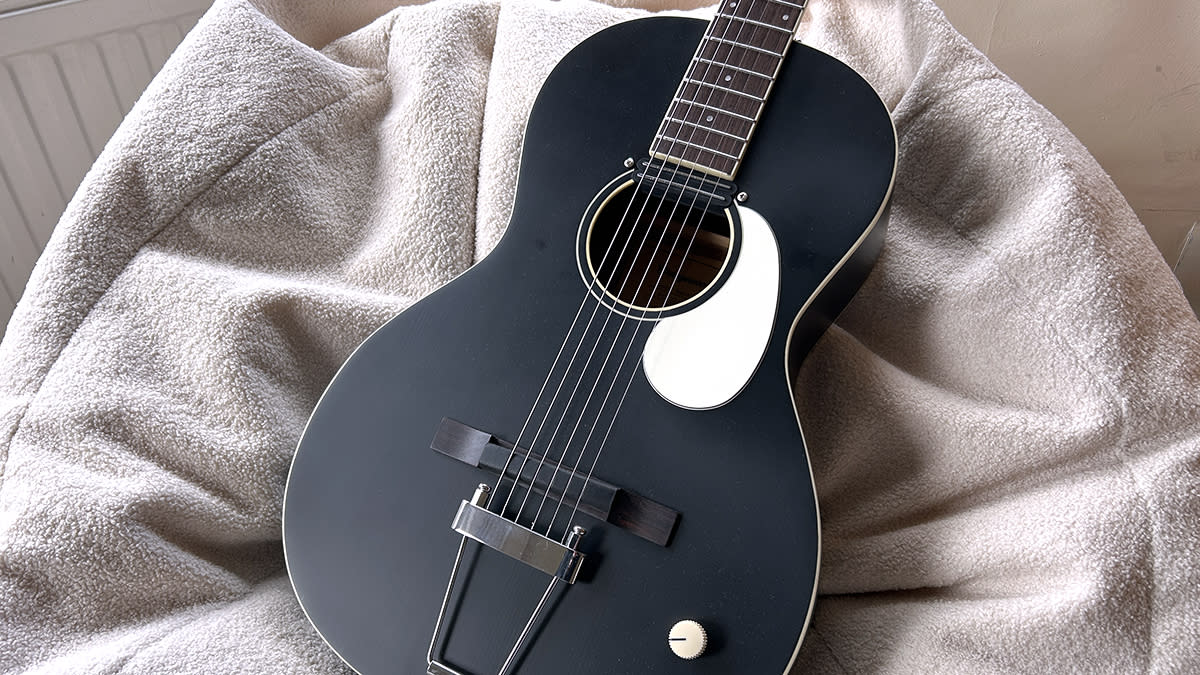
When you think of modern-day guitar gear innovators, Reuben Cox – the LA-based luthier who helped revolutionize the sound of indie music with his trademark rubber bridge mod – has to be part of the conversation.
Through his Old Style guitar store (and with the help of some notable artists championing his mods), Cox has been a key figure in pioneering and popularizing the rubber bridge guitar – a rather unassuming instrument that provides a very distinct tone.
It’s a sound that has dominated the world of indie music, characterized by a subdued, low-fidelity vulnerability that arises from that peculiar bridge – a feature that cuts short the string vibrations and emphasizes certain frequencies, resulting in a muted, deadened tone.
Through the 2010s and early 2020s, Cox’s creations, and rubber bridge guitars in general, have become “The Thing” in popular and indie music, passing through the hands of today’s biggest acts along the way.
Taylor Swift, Phoebe Bridgers, Ariel Posen, Olivia Rodrigo and Madison Cunningham have all helped make rubber bridge guitars the hottest trend for the next generation of players. Bob Dylan and The Rolling Stones are also said to be fans. Heck, there’s even a documentary about rubber bridge guitars.
The thing with rubber bridge guitars, though, is that they are rather hard to come by. Unless you have one deliberately made for you, or are brave enough to fit a rubber bridge to your own guitar – we have guides on how to do this on electric guitars and on acoustics guitars – then there aren’t many options available. Sure, there are some TikTok tricks involving rubber bands, but they’re no match for the real thing.
That’s why the arrival of the Orangewood Juniper earlier this year was such a notable release. Styled after the vintage Silvertone that Bridgers has been using, the temptingly priced $395 Juniper was, to our knowledge, the first production-run rubber bridge guitar, and looked poised to democratize the previously difficult-to-source six-string.
As someone who has never played a rubber bridge guitar, I was particularly intrigued by the Juniper – and saw it as the perfect opportunity to give the cult classic format a go, to see what all the fuss is about. I was in for quite a ride...
An instrument like no other
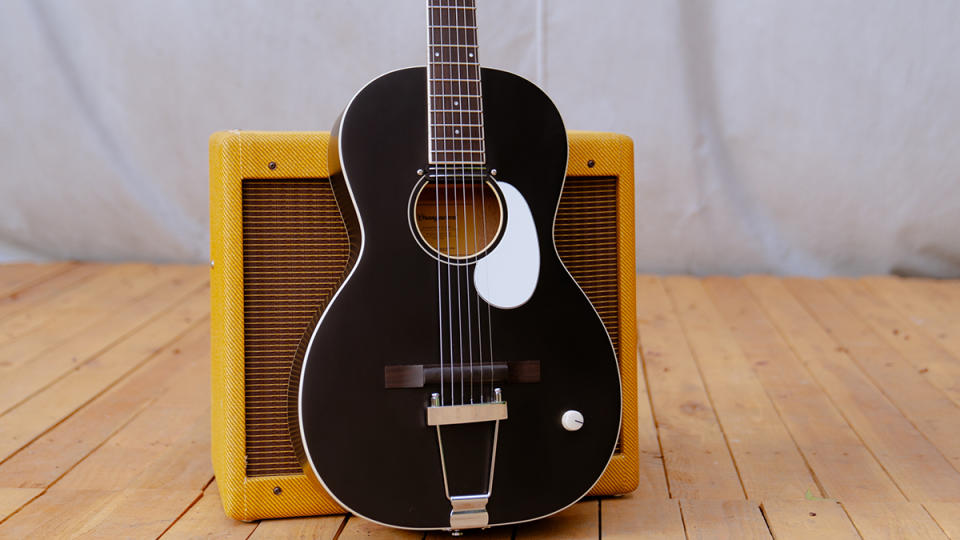
What has made the rubber bridge guitar so popular is its distinct sound: muted, mellow and subdued, yet with just the right amount of richness to deliver a tight punchiness that sits neatly in a mix.
Achieved by the rubber bridge limiting vibrations and deadening the natural sustain much quicker than usual, it’s a tone that – when paired with the flatwound strings that rubber bridge guitars require – lends itself particularly well to plinky plonky melodies, or subdued open-tuned strums.
Due to its design, the rubber bridge guitar also dampens the high-end frequencies, placing more emphasis on the low-end and – because of the lack of sustain – the physical percussive sound of string strumming. It has none of the hallmarks, then, of guitars I have ever played before.
One thing that was immediately apparent from playing the Juniper, though, was just how muted rubber bridge guitars actually are. It seems like a given, in hindsight, but without the safety net that the open string sustains of regular acoustics provide, the rubber bridge is a rather humbling experience.
For someone who has perhaps unwittingly relied on open and sustained strings to cover the cracks in my fingerstyle playing (I am by no means an acoustic-focused player), the rubber bridge felt somewhat alien, and certainly didn't behave how I was expecting it to.
When cycling through some arpeggios, the notes had to be hit dead-on, and with impeccable timing, or it would end up sounding… meh. That does probably say more about my playing than rubber bridge guitars, but it’s worth considering: don’t expect this to be a like-for-like swap for your regular acoustic.
So, it makes for a slightly jarring experience to start with, especially for someone coming from a predominantly electric guitar background, and that’s worth bearing in mind if you’re in a similar position.
However, once I accepted this would be no walk in the park, and approached it differently to my normal stock of guitars, I found myself overcoming the strangeness of the rubber bridge – and enjoying it far more.
I should say, the Juniper itself plays immaculately, and is a very nice acoustic indeed. It’s comfortable, nicely sized and shaped, and looks the part of a proper classy acoustic. The pickup delivers its tone faithfully, too, although I found myself leaving this one unplugged initially, in order to get that “authentic” rubber bridge sound.
Whatever the early hurdles I faced when coming to terms with the rubber bridge tone, the Juniper made overcoming them as easy as possible. And when I did get past them, I found the experience quite eye-opening…
Inspirations and implications
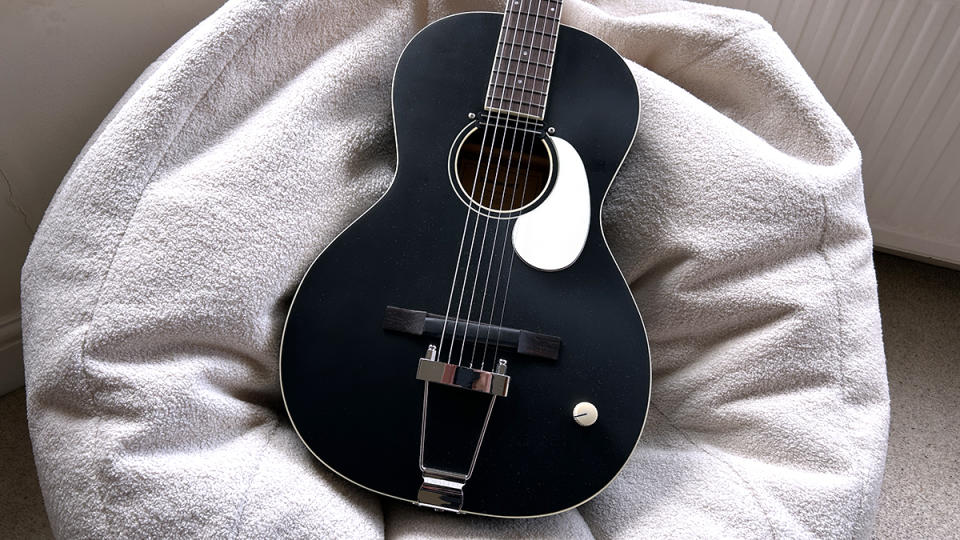
In practice, the wholly unique tone results in some interesting jumping-off points for playing, writing and recording. Much has been written about the rubber bridge guitar offering new avenues of inspiration for players, and it’s certainly true, especially when you accept the fact you’ll have to approach the guitar quite, quite differently.
Indeed, I felt far more confident handling the Juniper when I went back to listen to how some more notable rubber bridge players had been utilizing the instrument’s sound.
I quickly ruled out Posen’s music (I couldn’t play anywhere near that well even on a normal guitar), so settled on the strums and plinky plonky sounds of its indie champions.
As per Bridgers’ Garden Song, open tuning melodies and progressions seemed to come more naturally, and I found myself getting more out of the guitar when I stopped treating it like a ‘normal’ acoustic.
Sure, it did the blues shuffle thing fine, but my advice would be this: throw out the rulebook, and try and ignore your natural instincts. The rubber bridge sound might not be for everyone – I’d be lying if I said I wasn’t a tad underwhelmed at first – but to really make the most of it you have to go in with an open mind. You might not ‘get it’ straight away.
Open D tuning shapes and ideas particularly helped take me out of my comfort zone and explore new tunes, and while I wouldn’t say it was a revelation for me in terms of a songwriting awakening, I did find myself coming up with ideas that were removed from my immediate songwriting sensibilities.
In other words, it got me playing in a wholly new way. I see that as a huge plus.
A worthy addition to an acoustic arsenal?
The rubber bridge guitar does one thing, but it does that one thing very well, and once I’d recalibrated my bearings I found the design to be rather enlightening.
Do you need a dedicated rubber bridge guitar? It all depends on what sort of music you enjoy and play. If lo-fi pop is your thing, you’ll probably be impressed, but it is very much a one-trick-guitar, at least at first, so don’t expect it to behave like your current acoustic guitar – it won’t.
Having said that, the rubber bridge guitar does seem to be a pretty invaluable tool for practicing, writing and recording, if not performing. I’d like to think my early fingerstyle wobbles have merely helped refine my playing in this area, and have made me a more aware acoustic guitar player because of it.
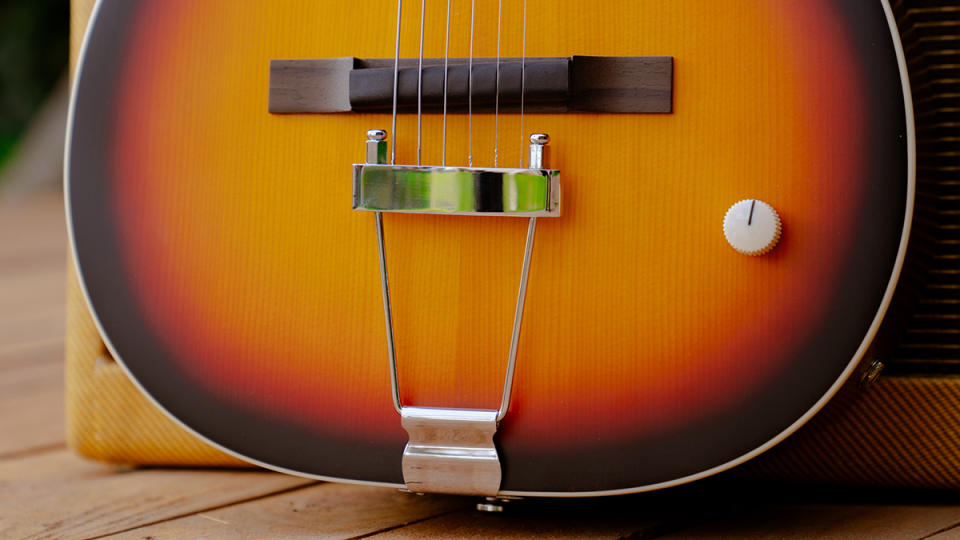
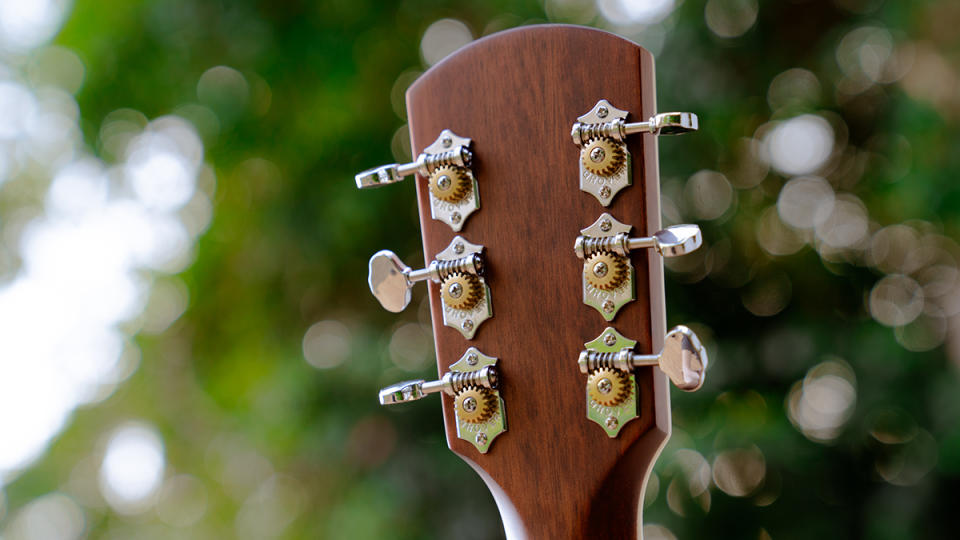
I have also experimented with new compositional ideas that I might not have stumbled on if playing a regular ‘ol acoustic.
Likewise, while I wouldn’t necessarily gig with this, I would record with it. After all, its track record of fleshing out the frequency spectrum and adding a subtle ‘something else’ to a recording is well documented. It would sit very nicely underneath some double-tracked acoustics, as a subtle pad of sorts.
There’s a reason why the likes of Taylor Swift, The National and Phoebe Bridgers all swear by the rubber bridge guitar. It’s a fine instrument with a unique sound that’s certainly worth experimenting with if you get a chance.
Plus, with the arrival of the Juniper, it doesn’t look like the rubber bridge guitar hype will be dying out any time soon – and I for one am rather pleased about that.
The Juniper got me playing in ways I hadn't before, and forced me to approach playing an instrument I've played for most of my life in a wholly different way. Even if I didn't particularly warm to it at first, and although it didn't behave quite as I expected, it led me to some eye-opening discoveries. If that's not the sign of A Good Guitar, I'm not sure what is.
After swiftly selling out its initial run of Junipers, Orangewood has now restocked the guitar in both Black and Sunburst finishes.
For more information on the Juniper rubber bridge guitar, head to Orangewood Guitars.

